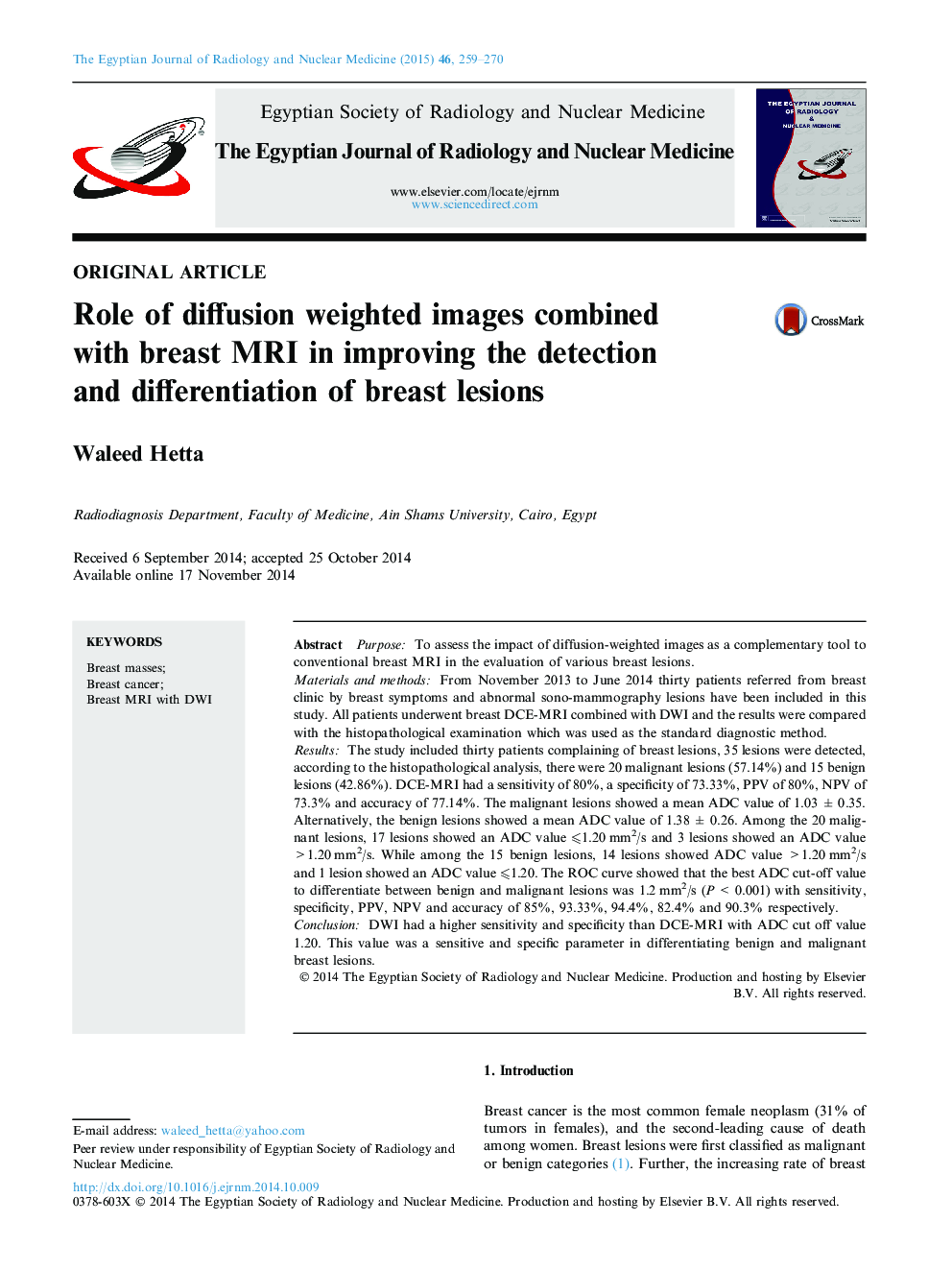| Article ID | Journal | Published Year | Pages | File Type |
|---|---|---|---|---|
| 4224438 | The Egyptian Journal of Radiology and Nuclear Medicine | 2015 | 12 Pages |
PurposeTo assess the impact of diffusion-weighted images as a complementary tool to conventional breast MRI in the evaluation of various breast lesions.Materials and methodsFrom November 2013 to June 2014 thirty patients referred from breast clinic by breast symptoms and abnormal sono-mammography lesions have been included in this study. All patients underwent breast DCE-MRI combined with DWI and the results were compared with the histopathological examination which was used as the standard diagnostic method.ResultsThe study included thirty patients complaining of breast lesions, 35 lesions were detected, according to the histopathological analysis, there were 20 malignant lesions (57.14%) and 15 benign lesions (42.86%). DCE-MRI had a sensitivity of 80%, a specificity of 73.33%, PPV of 80%, NPV of 73.3% and accuracy of 77.14%. The malignant lesions showed a mean ADC value of 1.03 ± 0.35. Alternatively, the benign lesions showed a mean ADC value of 1.38 ± 0.26. Among the 20 malignant lesions, 17 lesions showed an ADC value ⩽1.20 mm2/s and 3 lesions showed an ADC value >1.20 mm2/s. While among the 15 benign lesions, 14 lesions showed ADC value >1.20 mm2/s and 1 lesion showed an ADC value ⩽1.20. The ROC curve showed that the best ADC cut-off value to differentiate between benign and malignant lesions was 1.2 mm2/s (P < 0.001) with sensitivity, specificity, PPV, NPV and accuracy of 85%, 93.33%, 94.4%, 82.4% and 90.3% respectively.ConclusionDWI had a higher sensitivity and specificity than DCE-MRI with ADC cut off value 1.20. This value was a sensitive and specific parameter in differentiating benign and malignant breast lesions.
